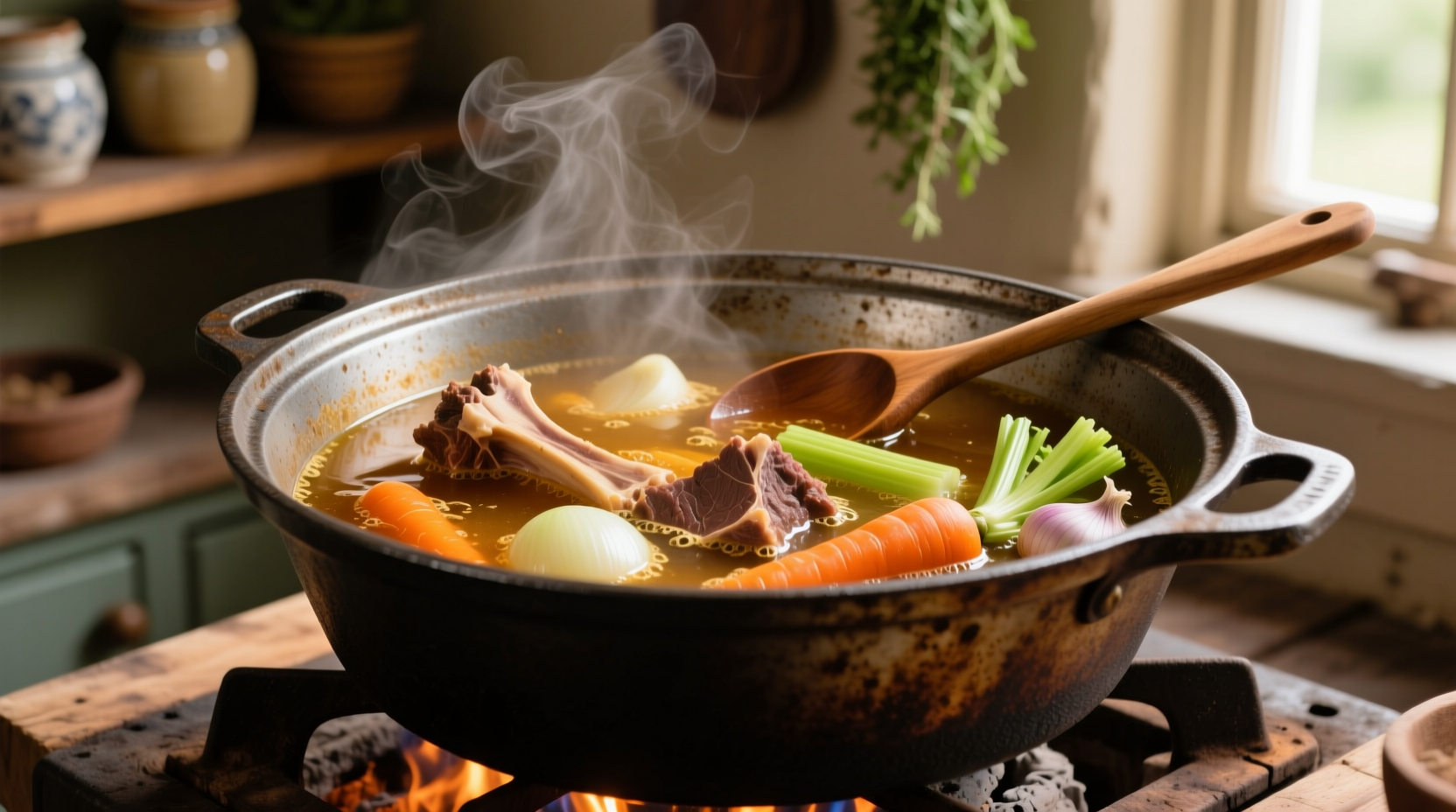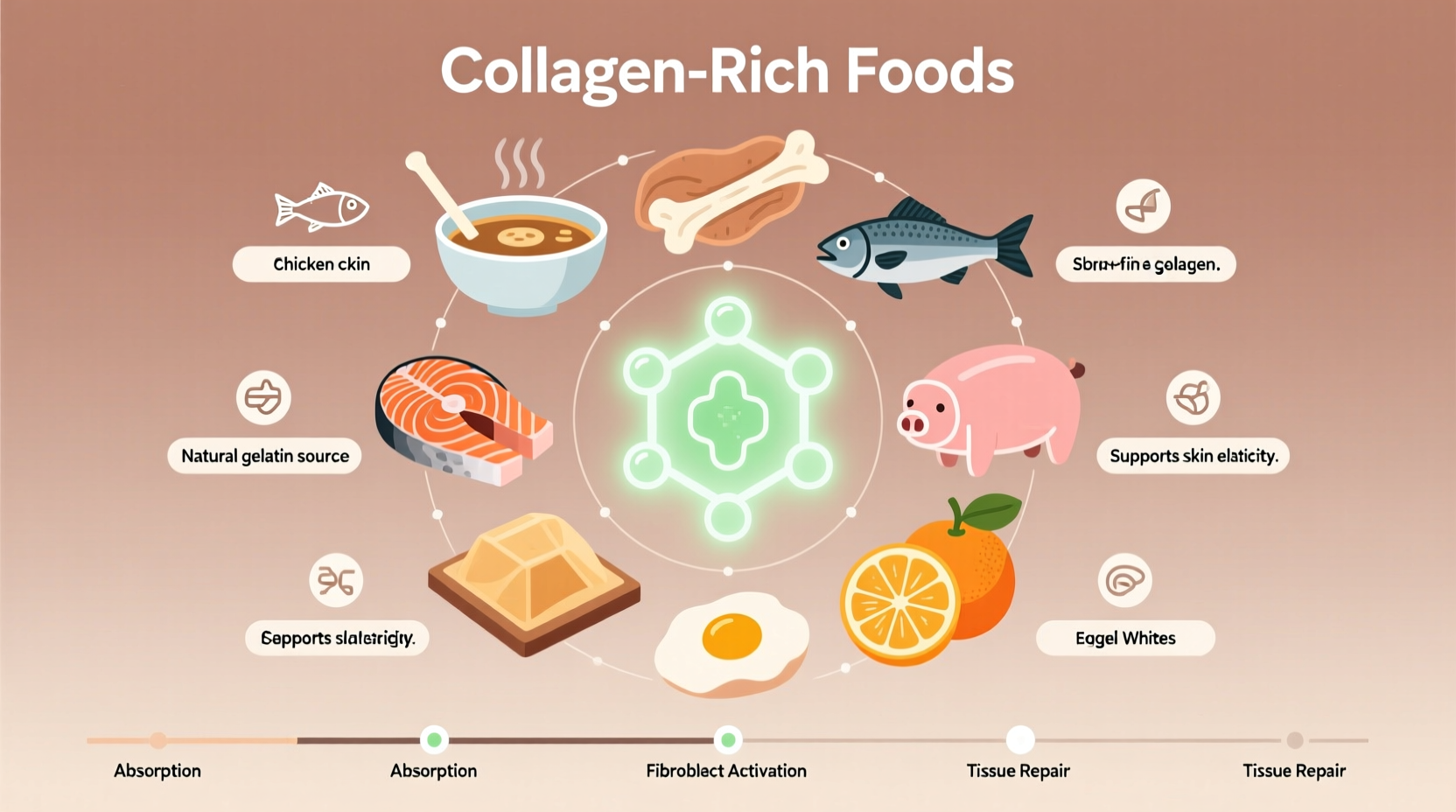Natural collagen sources include bone broth, chicken skin, fish (especially skin and scales), pork skin, and organ meats like liver. These animal-based foods provide direct collagen peptides your body can absorb. For plant-based support, vitamin C-rich foods like citrus fruits, berries, and bell peppers boost your body's natural collagen production.
Discover exactly which foods deliver the most bioavailable collagen and how to incorporate them into your daily meals. This guide cuts through the supplement marketing hype with science-backed dietary sources that actually work for skin, joint, and overall health.
Your Complete Guide to Dietary Collagen Sources
While collagen supplements dominate store shelves, nature provides powerful alternatives through whole foods. Understanding which foods contain collagen—and which merely support its production—is crucial for making informed dietary choices. Let's explore the science behind natural collagen sources and how to maximize their benefits.
Why Food Sources Beat Supplements for Many People
According to research published in the Journal of the American College of Nutrition, whole food sources provide collagen alongside natural co-factors your body needs for optimal absorption. Unlike isolated supplements, foods containing collagen come packaged with complementary nutrients that enhance bioavailability.
The National Institutes of Health notes that dietary collagen appears in the form of gelatin when cooked, which breaks down into the same amino acids as supplemental collagen but with better digestive tolerance for many people. This natural form avoids the potential digestive discomfort some experience with concentrated powders.

Direct Collagen Food Sources (Animal-Based)
True collagen exists only in animal tissues, particularly connective tissues, bones, and skin. These foods contain hydrolyzed collagen naturally through cooking processes:
| Food Source | Collagen Content | Preparation Tip |
|---|---|---|
| Bone broth (beef/chicken) | 5-10g per cup | Simmer 18-24 hours for maximum extraction |
| Fish skin (salmon, cod) | 3-5g per 3oz | Crisp skin while cooking fish fillets |
| Pork skin (cracklings) | 2-4g per oz | Bake instead of frying for healthier option |
| Chicken skin with cartilage | 1.5-3g per 3oz | Roast whole chicken for cartilage benefits |
Collagen-Boosting Plant Foods (Indirect Support)
While plants don't contain collagen (an animal protein), certain foods provide essential building blocks and cofactors that stimulate your body's natural collagen production:
- Vitamin C-rich foods: Citrus fruits, strawberries, bell peppers, and broccoli provide the critical cofactor needed for collagen synthesis. Just one medium orange delivers 130% of your daily vitamin C requirement.
- Copper-containing foods: Cashews, sesame seeds, and lentils supply copper, which activates enzymes essential for collagen formation.
- Zinc-rich foods: Pumpkin seeds, chickpeas, and mushrooms contain zinc that supports collagen production and wound healing.
- Anthocyanin sources: Berries like blackberries and blueberries protect existing collagen from degradation.
Collagen Food Timeline: Scientific Understanding Evolution
Our knowledge of dietary collagen has evolved significantly:
- 1950s-1970s: Scientists first identified collagen as the most abundant protein in mammals
- 1980s-1990s: Research established the connection between vitamin C deficiency and impaired collagen synthesis (scurvy)
- 2000s: Studies demonstrated that dietary collagen breaks down into specific peptides that accumulate in cartilage
- 2010s-present: Clinical trials confirm benefits of collagen-rich foods for skin elasticity and joint health
This progression shows why traditional foods like bone broth have regained scientific validation after centuries of culinary use.
Practical Meal Planning Strategies
Maximize collagen benefits with these practical approaches:
Morning Routine
Start your day with a cup of homemade bone broth or add collagen-boosting ingredients to breakfast. Try Greek yogurt with berries and pumpkin seeds for a triple collagen-supporting combination.
Lunch Solutions
Incorporate fish with skin (like salmon) or chicken with cartilage. Add bell peppers and broccoli to your salad for vitamin C and zinc. The Academy of Nutrition and Dietetics recommends pairing these elements for synergistic effects.
Dinner Applications
Choose cuts with connective tissue like short ribs or oxtail. Braise meats with acidic ingredients (tomatoes, wine) which help break down collagen into gelatin during cooking. Include copper-rich foods like lentils in your side dishes.
Important Context Boundaries
While collagen-rich foods benefit many people, important limitations exist:
- Vegans and vegetarians cannot consume direct collagen sources but can optimize production through plant-based cofactors
- Kidney disease patients should consult doctors before increasing protein-rich bone broth consumption
- People with histamine intolerance may react to long-simmered bone broths
- Collagen production naturally declines after age 25 regardless of diet, though proper nutrition slows this process
Debunking Common Collagen Myths
Let's clarify some widespread misconceptions:
- Myth: All collagen is the same regardless of source
Fact: Type I collagen (from fish) benefits skin while Type II (from chicken cartilage) supports joints - Myth: Plant foods contain collagen
Fact: Only animal tissues contain actual collagen; plants support production - Myth: You need expensive supplements for results
Fact: Traditional cooking methods extract collagen naturally from affordable ingredients
Maximizing Collagen Absorption from Food
Follow these science-backed strategies to get the most from collagen-rich foods:
- Consume vitamin C sources within 30 minutes of collagen foods for optimal synthesis
- Cook connective tissues slowly at low temperatures (braising, simmering)
- Combine different collagen types throughout the day (fish at lunch, chicken at dinner)
- Avoid excessive sugar which damages existing collagen through glycation
- Maintain adequate protein intake (0.8g per kg of body weight) as foundation
Remember that consistent dietary patterns matter more than single "superfood" meals. The American Journal of Clinical Nutrition emphasizes that regular consumption of collagen-supporting foods yields better results than occasional large doses.
Creating Sustainable Collagen Habits
Instead of chasing quick fixes, build these sustainable practices:
- Save vegetable scraps and meat bones for weekly bone broth batches
- Choose whole fish occasionally to utilize skin and connective tissues
- Experiment with traditional dishes featuring connective tissues (osso buco, pho, pozole)
- Add citrus zest to meals for concentrated vitamin C without extra sugar
- Include copper-rich seeds as regular snacks rather than occasional additions
These approaches integrate collagen support into your existing culinary traditions rather than requiring drastic dietary changes.











 浙公网安备
33010002000092号
浙公网安备
33010002000092号 浙B2-20120091-4
浙B2-20120091-4